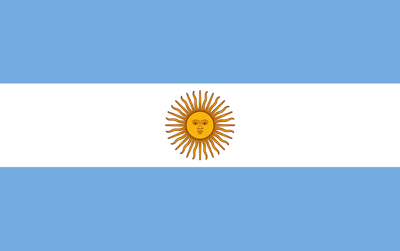Pakistan Local Cotton Market:
(The local cotton market is under pressure due to crop damage from heavy rains, leading to a surge in prices and increased reliance on imports. With a firm outlook for local cotton prices amid shortages, the global cotton market also faces challenges from declining demand and worsening crop conditions, despite some relief from a weaker dollar)
1- The local cotton market is experiencing a downturn in business activity due to ongoing rains in the cotton belt. These rains have not only caused a significant increase in cotton prices but have also led to a reduction in trading volumes.
2- The continuous downpours have severely damaged the cotton crop, pushing textile spinners to depend more on imported cotton. Pakistan’s textile industry is currently in a deep crisis, struggling with adverse weather conditions, reduced cotton cultivation, and weakening demand in both local and international markets.
3- Cotton prices in local markets surged by Rs. 800 to Rs. 1,000 per 40 kilograms over the past week. Reports indicate that the recent rains have severely damaged the cotton crop, impacting both its quantity and quality. In response to this, textile mills have begun importing cotton on a large scale, with reports suggesting that contracts for over one million bales have already been secured. Seems that local cotton prices will remain firm in coming days due to the shortage and damage of cotton.
4- ICE cotton faced further losses in last week. The market declined due to uncertainty in demand, and worsening crop conditions failed to improve sentiment. External factors, such as declining crude oil prices, also pushed down US cotton prices. However, a lower dollar index was a positive factor, as it made cotton purchases more attractive for foreign buyers.
5- For the 2024-25 season, U.S. net sales of Upland cotton totaled 135,200 running bales (RB), each weighing 226.8 kg. The largest buyers were Pakistan (74,500 RB), India (17,800 RB), Vietnam (14,400 RB), Mexico (9,000 RB), and Thailand (5,900 RB). Sales were offset by reductions from El Salvador, Indonesia, and Japan.
6- The projected 2024 U.S. cotton crop was reduced by 1.89 million bales to 15.11 million due to decreased planting, higher abandonment, and a slight drop in yield. Exports were cut by 1 million bales Globally, production was reduced by 2.55 million bales, mainly from the U.S. and India, while world use dropped by nearly 1 million bales, largely due to China. Imports rose for India, Turkey, and Pakistan, but fell for China and Bangladesh. Despite the reduction, 2024 production is still expected to be 3 million bales higher than in previous years, leading to an increase in U.S. ending stocks by 1.25 million bales.
7- Last week, cotton prices in Punjab and Sindh showed firm to upward trend from Rs 18,600 to Rs 19,500 per maund, (USC 0.81~0.85 lbs). In Sindh, cotton rate was Rs 18,600 to Rs 19,200 per maund, while in Punjab it ranged from Rs 19,000 to Rs 19,500 per maund. KCA was Up rs 1,000 to at the level of Rs.19,000 per maund, while PSF was stable at Rs. 362 PKR/kg.
Local Yarn Market:
(The local yarn market stagnates. Rising costs and import pressure squeeze prices. Suppliers struggle with inventory and face economic headwinds. Yarn prices firmed due to higher cotton costs but remain under pressure)
1- The local yarn market exhibited a firming trend this week, primarily driven by the upward trajectory of domestic cotton prices. While spinners have increased their yarn price offers, they remain open to negotiations with buyers.
2- Suppliers continue to navigate a challenging landscape, balancing low inventory levels against escalating energy and production costs.
3- PSF prices have remained stable this week, but a further decline of Rs 3-4/kg is anticipated next week.
4- Faisalabad’s market experienced subdued activity, particularly in viscose and fine-count yarn sectors. Cash flow constraints persist, hindering business operations.
| Count | Price in Pak Rupees / 10 LBS | Price US$/Bale |
| 16/1 Carded Weaving | 3250 – 3350 | 470 – 485 |
| 20/1 Carded Weaving | 3400 – 3500 | 495 – 505 |
| 30/1 Carded Weaving | 3800 – 3900 | 550 – 565 |
| 20/1 Combed Weaving | 3850 – 4000 | 560 – 580 |
| 30/1 PC Carded Weaving 52:48 | 3200 – 3500 | 465 – 505 |
| 40/1 Combed Compact Weaving | 4425 – 4550 | 640 – 660 |
| 60/1 Combed Compact Weaving | 6000 – 6200 | 870 – 900 |
| 80/1 Combed Compact Weaving | 8000 – 8200 | 1160 – 1190 |
| 40/1 CVC Carded Weaving 60:40 | 4000 – 4150 | 580 – 600 |
Export Yarn Market:
(The export yarn market saw improved business activity especially from Chinese buyers, leading to several finalized deals despite limited confirmations. Strong domestic demand and rising cotton prices, driven by new arrivals and weather-related damage, helped suppliers maintaining firm pricing. However, European market activity remained minimal due to ongoing holidays)
1- This week, the export yarn market experienced a boost in activity, driven by Chinese customers actively exploring prices, although business confirmations were somewhat limited.
2- Continued interest from Chinese customers led to the finalization of several deals with select brands.
3- Suppliers held firm on their pricing but showed eagerness to close deals with solid bids.
4- A strong domestic market provided support, preventing suppliers from resorting to panic selling in the export sector. Meanwhile, new cotton arrivals are on the rise but due to the rains and damage of cotton, the prices shot up due to which supplier also increased their prices.
5- On the other hand, European customers were largely unavailable due to holidays, resulting in minimal business activity from that region during the week.
| Export Yarn Prices | ||||||||||||||||
|
Local Fabric Market:
(Slow market sentiment was witnessed in local fabric. Looking ahead, we anticipate slow market sentiments with minor trading fluctuations. Prices are expected to trend upward in the coming weeks due to firm cotton prices)
1- During the current week under review, the local fabric market experienced a slowdown, with limited bulk inquiries for both narrow and wider-width fabrics.
2- Despite this, local brands continue to support the market. However, finishing mills have opted to remain on the sidelines due to challenges in securing orders from foreign customers and the need to support their own weaving units. This has resulted in restricted trading activity for both narrow and wider-width fabrics.
3- Most weavers are booked for narrow-width looms from early to mid-October 2024, while wider-width looms are booked until early November 2024, with onward deliveries being offered.
Export Fabric Market:
(Export fabric market remained mixed with limited number of inquiries however suppliers are expecting good flow of orders from European and USA buyers from next week onward. The prices are expected to remain stable)
1- Export fabric market continuously in slow pace in absence of demand from Far Eastern markets.
2- The suppliers are struggling to engage themselves in export based orders thus trying to offer best possible prices.
3- Although the yarn prices remained firm during the week however suppliers are keeping same prices as of last couple of weeks.
4- Currently suppliers are booked till mid of Oct and offering end Oct onward deliveries.
5- Some of the European customers are back from their summer holidays and started sharing inquiries both in narrow and wider width fabric.
6- The USA buyers were also active and discussing new orders.
7- Suppliers are hopeful to get bulk order both in narrow wider width during the next week onward
8- Wider width suppliers are booked till mid of Nov and offering end Nov onward deliveries.
| Local and Export Fabric Prices | ||||||||||||
|
Bed Linen and Towel:
(The Home Textiles sector is maintaining steady production, with most lines booked until the end of October. The entry of major players into towel manufacturing highlights new opportunities for growth in exports Despite these opportunities, the industry continues to face significant challenges, including insufficient governmental support and high energy costs, which could impede future performance)
1- This week has seen a continuation of stable trends in production lines. Currently, the capacities of vertically integrated units are approximately 70% to 80% utilized in processing, with similar trends observed in the stitching units.
2- Most of the production lines are fully booked until the end of October. Due to contingencies in in-house lines, some factories are opting for outsourcing production to meet their commitments. These production activities are driven by orders that were notably competitive in terms of price points and margins. However, many production houses reported losses when comparing pre- and post-order financials.
3- Additionally, there is a notable increase in interest in towel manufacturing, with major players. This reflects potential business opportunities in towel exports.
4- The flow of inquiries has slowed down, likely due to the holiday season in Europe. However, the strong flow of inquiries last month and subsequent submissions have resulted in a significant queue of orders awaiting confirmation. We anticipate that inquiries and demands will pick up pace within the next 2 to 3 weeks, with confirmations, renegotiations, and subsequent bookings.
Garments:
(Overall, Pakistani garment manufacturers are running at good capacity and waiting for orders to fill the rest of the space also anticipating more orders; nevertheless, there is some hope that some of the country’s top retail brands have started placing orders with specific units)
1- Pakistan’s garment sector has faced numerous challenges. Despite of increased competition from Bangladesh, Vietnam, and Cambodia in low-cost textile production, Pakistan’s apparel industry still receives sufficient orders to meet their production capacity.
2- In contrast, dyeing units experienced a scarcity in the 2nd quarter of 2024. As time passes, a glimmer of optimism emerges as brands and brands are placing new developments for FW25 that represent positive views. Ultimately, this will drive demand in the apparel industry, resulting in orders in the third quarter of 2024. However, factories are offering deliveries from the Mid of November.
3- The worldwide denim market is struggling with inflation, but makers remain optimistic about the future.
Crude Oil:
1- Crude Oil prices opened at USD 77.42 with lower level as compared to last week closing figures. in this week, crude oil prices showed downward trend and closed on lower side by the end of week.
2- In last day of the week, Crude Oil price closed at USD 73.55 with decrease of 3.87 USD cents as of opening figure of week
| Opening of Week | Closing Of Week | Change | |
| Price | 77.42 | 73.55 | -3.87 |
Exchange Rate:
1- In last week values of Pak rupee apricated against US Dollar’s, other major currencies showed mix trend in both interbank and open markets.
2- At the end of week, Euro closed on a negative note with figure of 1.10 and British Pound also closed on negative note with figure 1.31 against USD..
| Selling | Buying | |
| LC Sight | 275.92 | 275.87 |
| LC 120 Days | 262.59 | 262.54 |
| Open Market | 281.49 | 275.32 |
New York Cotton Future:
The New York Cotton futures started the week lower than the previous week’s closing figures. However, NYCF showed a mix trend in this week and closed on lower side by the end of week.
1- October 2024 closed at 69.79, experiencing a decrease of 79points from the previous week.
2- December 2024 closed at 69.99 showing a lower trend of 27 points from the previous week.
3- March 2025 closed at 71.65, decrease by 14 points from the previous week.
4- May 2025 closed at 72.87, drop of 9 points from the previous week.
Liver Pool Indices:
1- Liverpool Index A was opened at 81.65 on same levels from the previous week of closing figure.
2- In this week Index “A” showed mix trend and closed on lower side by the end of week.
3- At last day of the week, LPI “A” closed at 81.20 with decrease of 45 points
| Opening of the Week | Closing of the Week | Change | |
| Index A | 81.65 | 81.20 | -0.45 |







